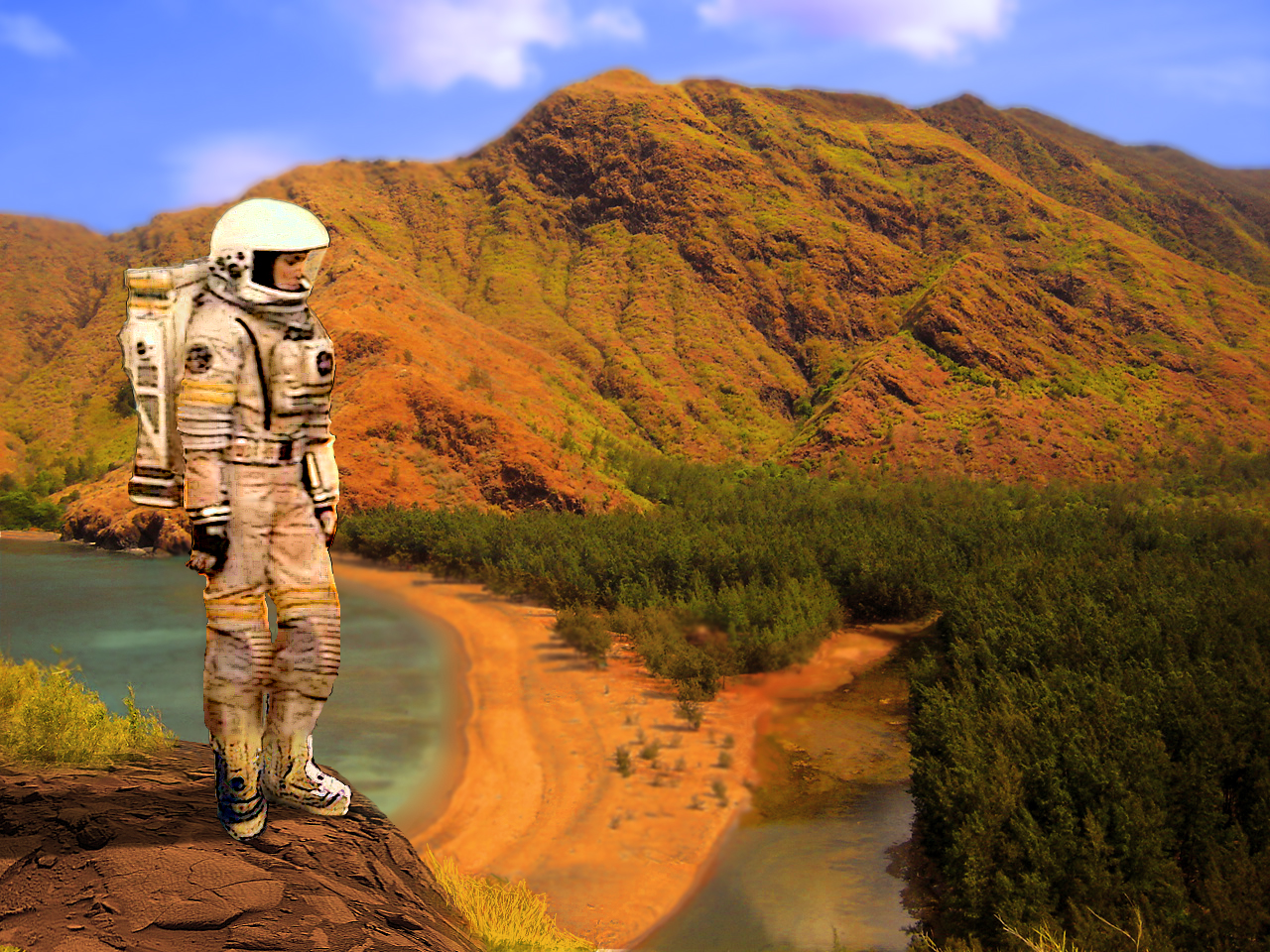Terraforming Mars: There’s not enough carbon dioxide
The atmosphere of the red planet not only lacks enough oxygen, it is also very thin. Instead of a surface pressure of one bar on Earth, the surface pressure in Mars’s atmosphere reaches only 6 millibars, thus, less than one-hundredth of the Earth’s surface pressure. Consequently, to work on Mars, astronauts would have to wear pressurized suits. The atmosphere would have to be considerably denser for a respiratory mask to be sufficient. If the density were even higher, carbon dioxide, the main component of Mars’s atmosphere, could play its same role that is so dreaded on Earth, that of a climate-changing gas: it could be used to produce a greenhouse effect, temperatures would rise – and perhaps if the temperatures were to increase enough at some point, the extant frozen water would become liquid again.
Supporters of colonizing Mars want to accelerate this process, which is called “terraforming,” by, e.g., thawing the CO2 at the poles with giant mirrors. But there is a problem: does Mars even have enough carbon dioxide for this process to make it Earth-like?
In an article in the science journal Nature, researchers give the answer very clearly: no, the available quantity is insufficient by far. The scientists looked at all the data from the various Mars probes and searched for CO2 reservoirs. CO2 can be found, among other places, in the polar ice caps, but also chemically bound in Mars rocks. Then they looked at how much of this gas escapes from Mars and is lost forever to space. According to their calculations, Mars has already lost 50 to 90 percent of its atmospheric carbon dioxide in this way.
The conclusion is therefore not promising: at best, Mars’s atmosphere could be brought to 20 millibars. This would raise the temperature by around 10 degrees Celsius. To melt the existing water, a temperature increase of 60 degrees (on average) would be needed. Under these conditions, liquid water would not be stable on the surface, even if local temperatures rose above 0 degrees Celsius in the summer.

